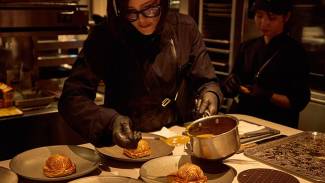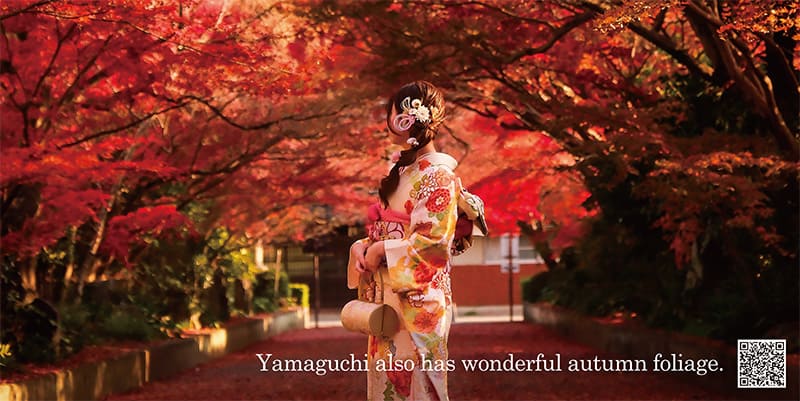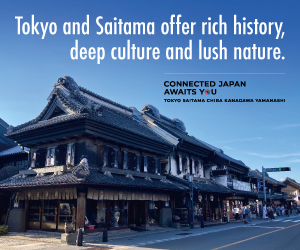YAMAGUCHI PREFECTURE
SIX OF WEST JAPAN’S HANAMI HOT SPOTS
Yamaguchi Prefecture, situated on the western tip of Honshu, has gradually grown into one of the most stunning places in the country. Modeled on 14th century Kyoto, it became known as “the Kyoto of the West” and is the only Japanese destination included on the New York Times’ list of “52 Places to Go in 2024.”
Easily accessible in 90 minutes by plane or 4 hours and 30 minutes by bullet train from Tokyo, Yamaguchi is famous for its beautiful sakura (cherry blossoms). Mixing the prefecture’s history and unparalleled landscapes with the ephemeral beauty of cherry trees in full bloom, Yamaguchi is the perfect place for flower-viewing, known as hanami. Below are some of the most scenic locales to visit in the prefecture and its capital from late March to early April.
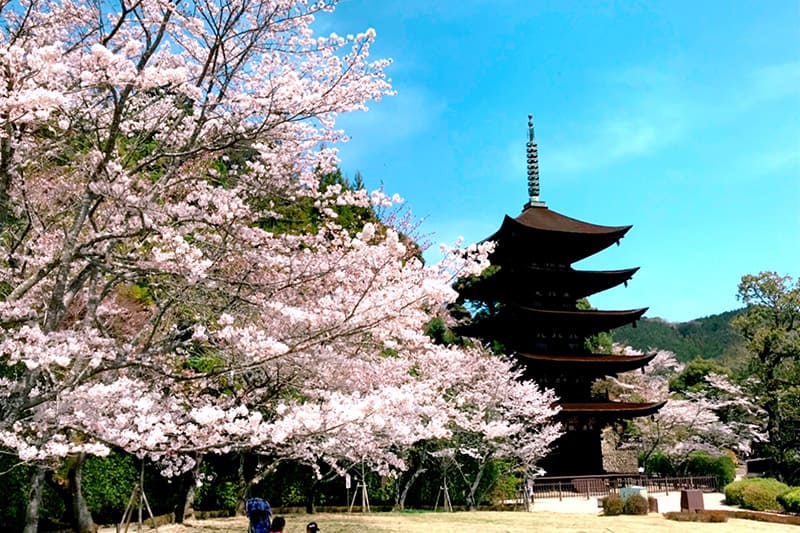
Rurikoji temple (Yamaguchi)
Rurikoji temple in the city of Yamaguchi is home to one of Japan’s three most famous pagodas. Completed in 1442, it’s the 10th-oldest five-story pagoda in Japan and a designated National Treasure. It commemorates Ouchi Yoshihiro, a member of the powerful Ouchi clan that helped make Yamaguchi the jewel of western Japan. The 31-meter pagoda features a cypress bark roof and elegantly minimal ornamentation. The roof is undergoing a complete rethatching (scheduled to conclude in March 2026), but the scaffolding sheets should start to gradually come down from this March.
Access: 15-minute bus ride or 30-minute walk from Yamaguchi Station.
Ichinosaka River (Yamaguchi)
The Ichinosaka River, which flows through the center of the capital, is an unforgettable cherry blossom spot reminiscent of the famous Kamo River in Kyoto. During spring, about 200 Yoshino cherry trees bloom along its banks, creating a mesmerizing world of wonder as the pinkish blossoms reflect on the water’s surface. The trees are illuminated at night by electric lights and (from May to June) the ethereal genji-botaru fireflies. Preserved town houses in the area add to the Ichinosaka River’s nostalgic yet timeless beauty.
Access: 20-minute walk from Yamaguchi Station.
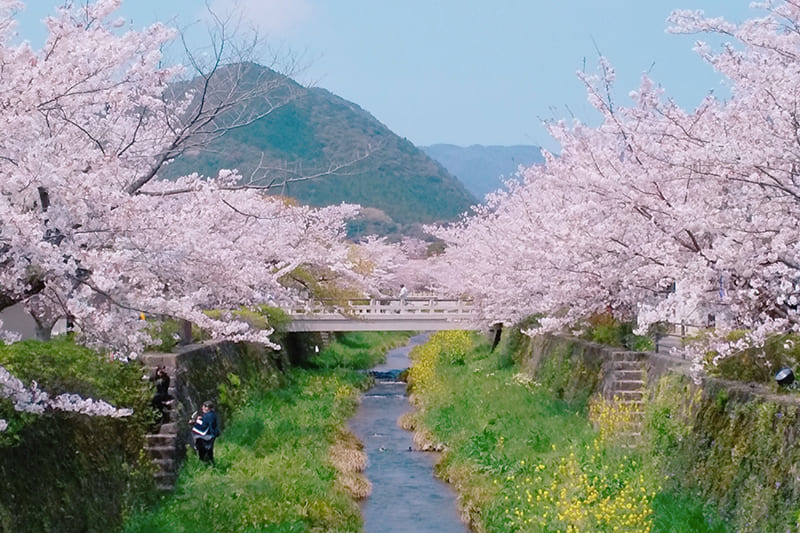
Shimatagawa Riverside Park (Hikari)
Shimatagawa Riverside Park in Hikari is a can’t-miss spot during a cherry blossom tour of Yamaguchi. The park features vibrant pink cherry trees that pair beautifully with the golden rapeseed blossoms that line the park’s boardwalk to create a colorful symphony of nature. Bird-watchers will enjoy being on the lookout for up to 70 unique species in the area, including petrels and egrets. The park offers a quiet escape into serene beauty in the heart of the city.
Access: 5-minute bus ride or 10-minute walk from Hikari Station.
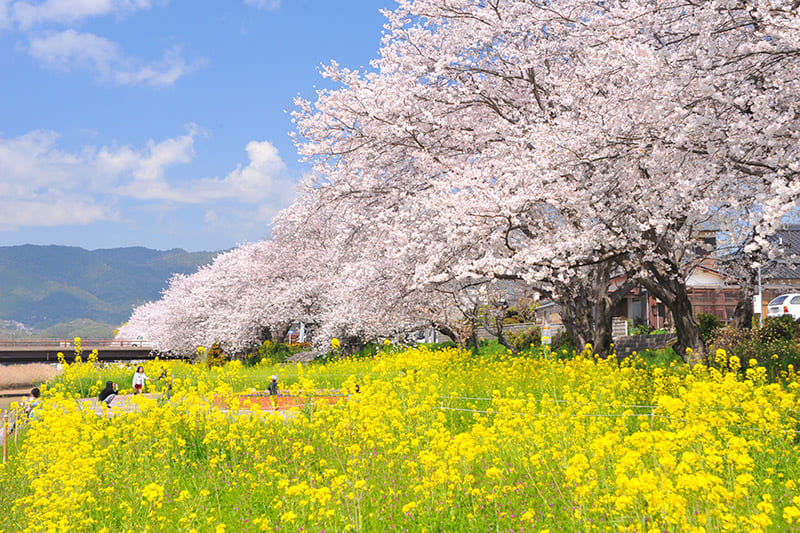
Kintai Bridge (Iwakuni)
The 210-m Kintai Bridge is one of Japan’s three most famous and a national scenic spot that makes a perfect base for exploring the city of Iwakuni, especially during hanami season. Thousands of cherry trees bloom around the excellently preserved wooden arch structure and nearby Kikko Park, creating a magical world of pink that visitors can enter via a “sakurabune” pleasure boat that floats gently down the Nishiki River. Nearby attractions include samurai residences, Kikko Shrine and Iwakuni Castle, accessible via a ropeway that offers breathtaking views of the pink-covered area.
Access: 15-minute bus ride from Shin-Iwakuni Station.
Shizuki Park (Hagi)
Centered around the national historic site of the Hagi Castle Ruins, Shizuki Park is one of Yamaguchi’s premier cherry blossom spots. Around 600 Yoshino cherry trees cover the park in a pale-pink carpet each spring while Midori-Yoshino trees, a designated “natural monument” of Yamaguchi Prefecture, add touches of pure white to the scenery with their snow-colored petals. At night, the illuminated castle walls allow visitors to enjoy the reflection of these pastel trees in the castle moat. Moat cruises are also available.
Access: 30-minute walk from Higashi-Hagi Station or 5-minute walk from the Hagi-jo-ato/Shizuki Koen Iriguchi bus stop.
Hinoyama Park (Shimonoseki)
Perched atop a 268-m mountain, Hinoyama Park offers one-of-a-kind views of the Seto Inland Sea and Sea of Japan. In spring, 1,000 Yoshino and Japanese mountain cherry trees transform this Shimonoseki mountainside into an otherworldly pink paradise. The park’s other main attraction is a tulip garden with 40,000 flowers that were a gift from Shimonoseki’s Turkish sister city Istanbul and bloom around the same time as the trees.
The breathtaking night scenery enjoyed from the mountaintop park has been described as a “$10 million view.”
Access: 15-minute bus ride from Shimonoseki Station to the Hinoyama Ropeway bus stop. It’s a 30-minute walk from there.
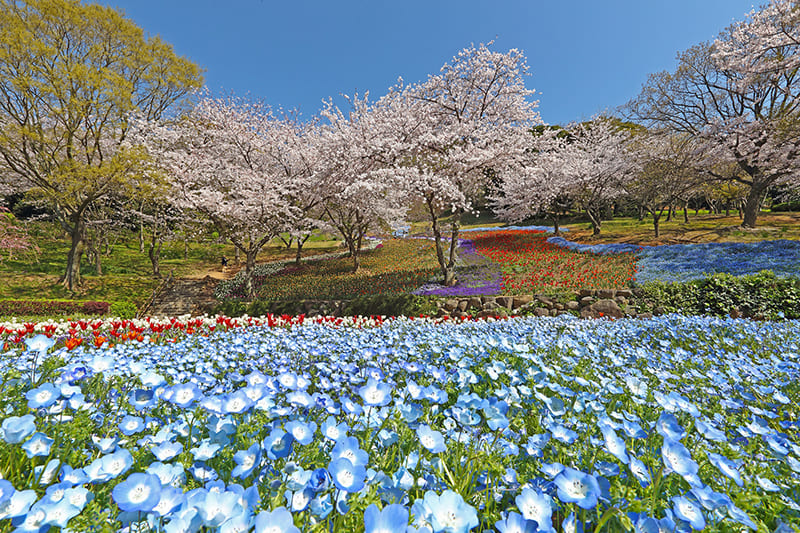
Getting around: Touring is easier with the Have Fun in Yamaguchi Pass. For more information, see https://www.klook.com/activity/123797-have-fun-in-yamaguchi-pass-1-week-free-pass/




